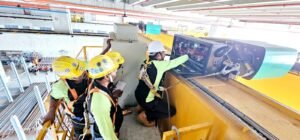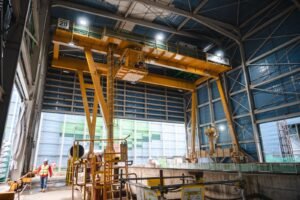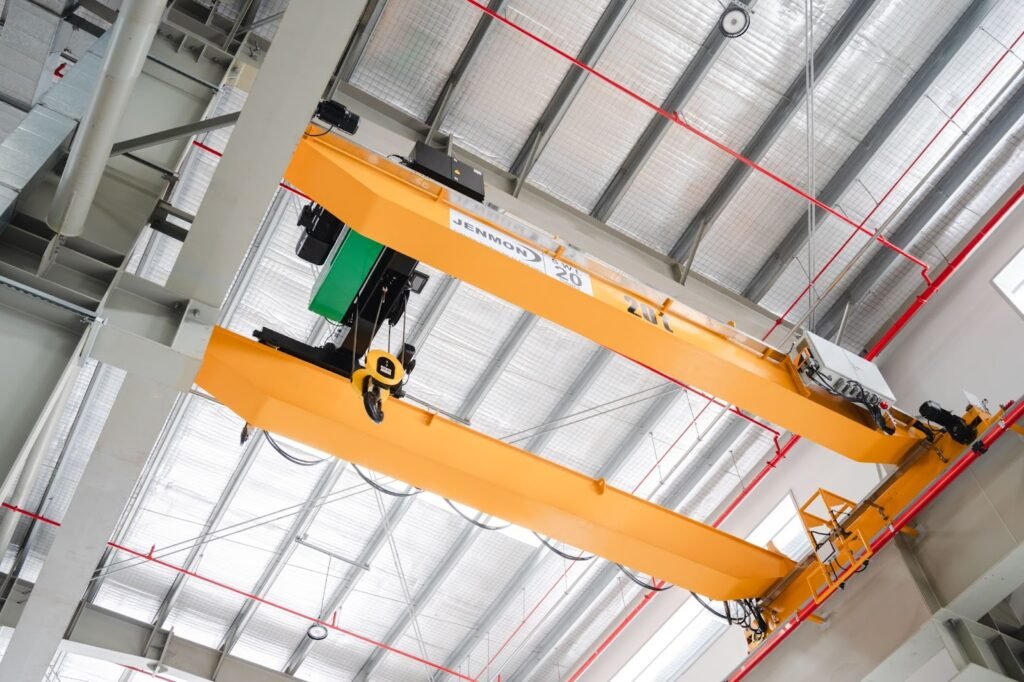Jenmon | Blogs
Explosion Proof Crane vs. Standard Crane: What’s the Difference?
A crane refers to a machine that manages heavy loads and transfers them. You will find them in construction sites, factories, shipyards, and power plants. They are built so they can carry heavy materials where power and distance are required. Both cranes and hoisting move loads, but hoisting does it mostly up and down, and the cranes do it up and down or crosswise.
Typical everyday cranes are hoist cranes, jib cranes, and chain hoists. These cranes are mounted on larger crane systems that improve the smoothness and safety of lifting. Whatever site you are operating in, it has a set-up of cranes that will see the job done with much efficiency.
What Makes a Crane Explosion-Proof?
An explosion-proof crane protects people in hazardous locations. It is applied in refineries, chemical factories, and power plants. They are operated in areas with flammable material, dust, or explosive gases in the air. The crane is designed not to cause an explosion to start–even the slightest sign of a spark or fire is deadly.
This is the reason why its components are sealed and, in addition, extra rugged. Equipment should not take any chances when you are in a combustible or explosive atmosphere. This is a place where explosion-proof cranes excel and provide functionality and safety.
Where Standard Cranes Work Best
Standard cranes are perfect for everyday lifting jobs in safe environments. You’ll find them in warehouses, production lines, and construction sites without flammable risks. They work well where electricity is not a danger.
From overhead cranes to electric chain hoists and manual hoists, these tools handle a wide range of tasks. You’ll also find them in setups from standard products to highly advanced systems. If your site doesn’t deal with hazardous materials, standard cranes may be just what you need to keep operations smooth.
Key Differences Between Explosion-Proof and Standard Cranes
Let’s break down how these two crane types stack up.
1. Level of Safety
Cranes which are explosion-proof can be used with greater safety. They are constructed in locations where even the slightest sparks may result in fire or explosions. These cranes cause ignition breakdown; thus, they are effective in those regions that contain flammable or combustible substances. Ordinary cranes are great for normal work, but not to be used where fires or blasts can happen. The safety level should never be compromised; pick a crane that will provide the safety required in a dangerous work site.
2. Usage and Environment
Explosion-proof cranes work best in places where flammable, combustible, or explosive materials are present. These include petrochemical plants, refineries, and other hazardous environments. They’re made for areas that need more than just basic lifting—they need extra protection. On the other hand, standard cranes are perfect for clean, open areas with no such risks. They’re used daily in manufacturing plants, warehouses, and similar job sites. If your site deals with dangerous materials, go explosion-proof. If not, a standard crane may be the better fit.
3. Design and Components
Explosion-proof cranes are built differently. Their electrical and mechanical parts are sealed and protected to prevent ignition. These cranes meet strict international standards for safety. They include special motors, control systems, and electrical setups that make them safe for hazardous areas. Standard cranes don’t need all that. Their parts are more general and designed for normal working conditions. If your operations are straightforward, standard crane components will do the trick. But if there’s any ignition risk, explosion-proof designs are the safer and smarter choice.
4. Product Range and Customisation
Explosion-proof cranes are available in a wide range, from standard products to highly advanced systems. You can customise them based on lifting capacities, workspace layout, or specific safety needs. Some are built into workstation bridge setups, while others come as double girder bridge cranes. Standard cranes are more common and come in many general-use configurations. You can still find advanced options, but the focus is more on performance than protection. Whether you need something basic or complex, there’s a product range to fit your site.
Choosing the Right Crane for Your Site
Think about your environment. Is it a hazardous space with flammable or explosive atmospheres? If yes, don’t risk it—go with explosion-proof cranes. They’re made for safety, which is where it matters most. The work of a crane is to safeguard loads. In the case that your site is free of hazardous materials, standard cranes are commonly less expensive and simpler to maintain. You need not pay too much, but cannot afford to pay less. When selecting the right crane, you must understand the hazards surrounding you and select equipment that suits your lifting requirements and safety capacity at your site.
Final Thoughts: Safety First in Hazardous Workspaces
At Jenmon, we always say—safety comes first. Whether you need a manual hoist, a jib setup, or a complete crane system, the key is understanding your environment. Explosion-proof cranes are used for sites that carry high risks of ignition. Standard cranes do just fine when those risks don’t exist. Take the time to assess your worksite. Contact us now to have a look at your materials, your power setup, and your hazards. The right crane isn’t just about lifting—it’s about lifting safely, smartly, and without compromise.




